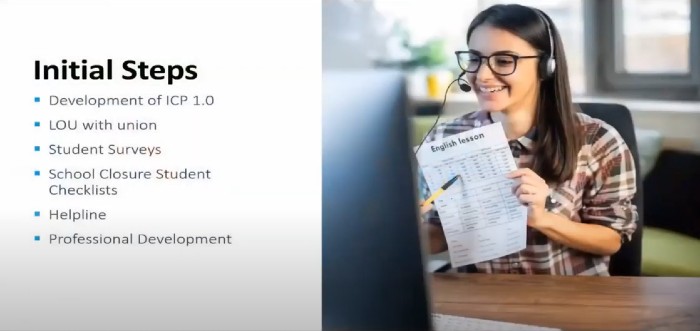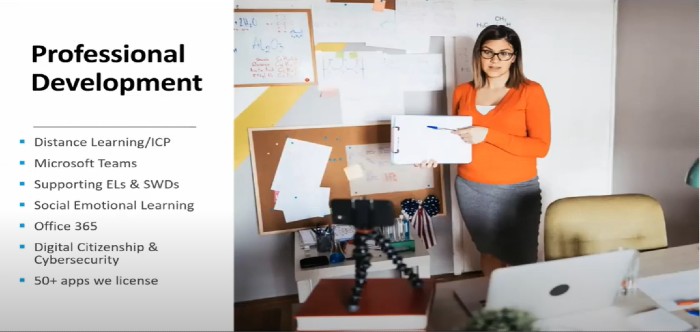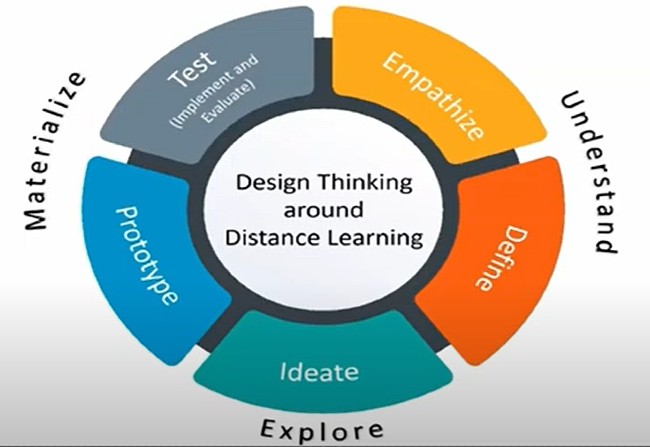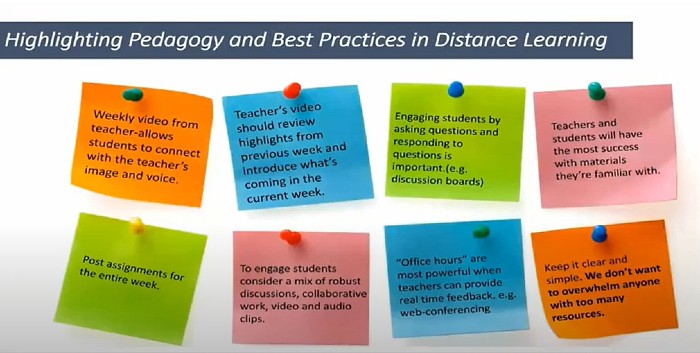Supporting Teachers: A Three-Pronged Approach
Izquierdo outlined the district’s three-pronged approach to supporting teachers when the crisis hit.
Miami-Dade County Schools is the nation’s fourth-largest district. It serves an extremely diverse population of 348,000 learners and supports more than 20,000 teachers.
Marie Izquierdo (@miamiCAO) is Chief Academic Officer and has spent much of her career helping build a technology-rich program for the schools in her district. In 2012, the district passed a major referendum called “Digital Convergence” in an effort to provide more than 200,000 devices to teachers and students.
During her presentation during Tech & Learning’s recent “Future-Proofing Your District” virtual conference, Izquierdo outlined the district’s three-pronged approach to supporting teachers when the crisis hit. “Supporting our teachers became our north star,” Izquierdo said.
1. Highlighting and Expanding Existing Successes
With the foundation having been laid in 2012 through the Digital Convergence plan, many teachers had already explored blended and flipped teaching concepts. When learning shifted to a remote environment, those who had established routines in these areas were encouraged to continue as students found comfort in what was familiar.

Bell ringers, warm-up exercises, exit slips, and other best practices needed to be maintained throughout this shift in teaching and learning. While the district had no formal LMS, it did have a suite of tools that teachers were already familiar with and could build from after doors were shuttered on March 13.
Rather than forcing teachers to go to a single unlearned platform, leaders encouraged them to continue to use the communication tools they had established with their community and parents. Tools such as Zoom, Remind, and SeeSaw were already being utilized, and the district was empathetic to the needs of students and teachers during the transition. This did create some challenges in the first couple of weeks as parents of multiple students who were on different learning and communication platforms struggled. Some of the remote learning was consequently re-aligned via professional development.
- Even Teachers Fail: How to Embrace Mistakes as an Educator
- Top Sites for Educator Professional Development
- Strategies for Virtual Professional Development
- Building A Video Library For Professional Development
2. Professional Development for a Community of Learners
District leaders were aware of some of the inadequacies happening in the initial weeks of remote learning and quickly designed a two-day online PD event for staff. Leveraging partnerships from companies such as Nearpod, Microsoft, and Discovery, a variety of online sessions were available to offer for staff support.
Tools and ideas to transform education. Sign up below.

Creating a landing page for distance learning to help guide parents became another priority. The district’s distance learning website became a remote learning center for students, teachers, and parents. The district’s Parent Academy website helped support parents and answer many of the frequently asked questions from the community.
Parents were surveyed the week before closures, and plans were developed for getting devices to the community utilizing the asset management system, which also leveled out devices across campuses. On the day of closure, 32,000 students left with a device; now more than 115,000 devices have been deployed to the community, including more than 9,000 internet hotspots to provide connectivity.
One challenge immediately identified was the lack of a district-wide learning management system (LMS). A new platform was in the process of being onboarded when the pandemic hit, but was only in the initial phase.
With no formal LMS, leaders began to rely heavily on Microsoft Teams. The district used its federated Microsoft accounts to provide a safe and secure online place for teachers and students to have learning transactions. Izquierdo reported that prior to the pandemic, there were 18,000 users on Microsoft Teams; now there are more than 240,000 users as the platform has turned into an ad-hoc LMS.
As many teachers were already using Zoom as their video conference platform of choice, the district purchased the enterprise edition and integrated it with Teams. As student data and rosters were already uploaded into Microsoft, this ensured greater security by limiting Zoom log-ins to district accounts. Utilizing Teams for grading, feedback, and scheduling of work also became invaluable for teachers and students alike.
Now with training and tools in place, the next challenge centered around how and what remote instruction should look like.
3. Models for Instructional Delivery
When the district embarked on the Digital Convergence program, leaders had put into place an Instructional Continuity Plan (ICP) as a guide for staff around best practices in blended instruction. Now with the pandemic and rapid shift to remote learning, the ICP needed an update.

On April 3, just a few short weeks following closure, the district debuted ICP 2.0, a plan designed to use best practices in remote instructional delivery to support teachers, students, and families.
Instruction was created using the models for design thinking (image right). Using this, they created “out-of-the-box” solutions that best suited the variety of student needs. Taking the many factors that might affect learning at home and the increase of screen time into account, remote instruction was designed in chunks. Knowing that you couldn’t teach the same content that you would in a traditional sense, and that students can’t be on a screen for six straight hours, teachers needed to be selective and prioritize essential standards to pare back the curriculum. Add to that the challenges of equitable access and limited printed materials, creating lessons with empathy in mind became key.
“How might we…” statements were used to tackle the two biggest challenges during this phase of ICP 2.0. Teachers worked in teams to ideate solutions for their teaching and began prototyping some of their existing lessons to better suit remote learning. Abandoning fixed mindsets and trying new things while also reflecting and adjusting when things didn’t go well was encouraged. The district highlighted best practices in pedagogy and remote learning that were born out of the creation of ICP 2.0.

This prototyping using design thinking will help set the stage for whatever the return of school looks like in the fall. Allowing teachers space to create while also being “rigidly flexible” around certain uniform tools, will help improve remote learning in the future.
Resources
- Digital Convergence
- Instructional Continuity Plan 2.0
- Resources for educators, families, students
- Virtual training for parents
Carl Hooker has been a part of a strong educational shift with technology integration since becoming an educator. As Director of Innovation & Digital Learning at Eanes ISD, he has helped spearhead the LEAP program, which put one-to-one iPads in the hands of all K-12 students in his 8,000-student district. He is also the founder of “iPadpalooza”- a three-day “learning festival” held in Austin annually. He's also the author of the six-book series titled Mobile Learning Mindset, a guide for teachers, administrators, parents and others to support and embrace mobile learning in our schools. Read more at Hooked on Innovation.
Carl Hooker has spent the past 20+ years in education as a teacher and administrator focused on the thoughtful integration of technology and innovation. He consults for multiple districts across the country and is a frequent speaker at state and national events. In his free time he's an author, DJ, podcast host, Poetry Slammer, and Trivia Night MC. He's the co-founder of the social platform K12Leaders.com. Check out his latest book Ready Set FAIL! Now available for order here: https://mrhook.it/fail Read more of his blogs at Hooked on Innovation.
